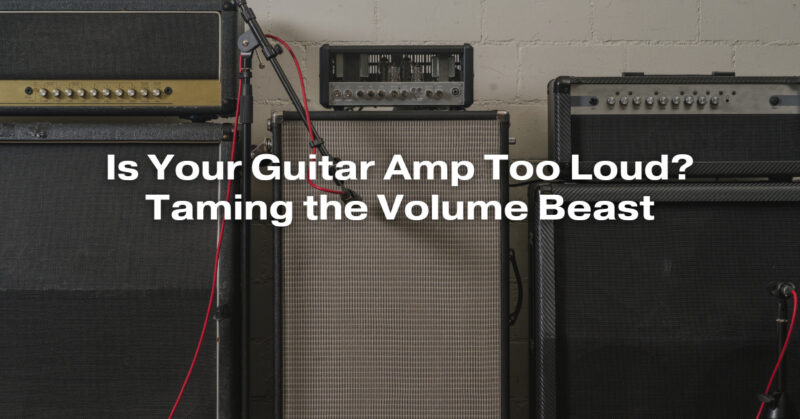Dealing with a guitar amp that’s too loud can be a challenge, especially in situations where you need to control your volume. Here are some strategies for taming the volume of your guitar amp:
1. Use an Attenuator:
- An attenuator is a device that sits between your amplifier’s output and speaker, allowing you to reduce the output volume without sacrificing the amp’s tone or dynamics. This is one of the most effective ways to lower your amp’s volume while preserving your desired tone.
2. Use a Volume Pedal:
- A volume pedal placed in your effects loop can serve as a master volume control for your entire rig. This allows you to adjust your overall volume easily, even while playing.
3. Use an Amp with Power Scaling:
- Some modern amplifiers have built-in power-scaling features that allow you to reduce the amp’s wattage while maintaining its tone. This can be a convenient way to lower the volume.
4. Use an Amp with an Adjustable Wattage Switch:
- Certain amplifiers have a switch that allows you to toggle between different wattage settings. Lowering the wattage can decrease the overall volume while retaining the amp’s character.
5. Use an Amp with Built-In Attenuation:
- Some amplifiers come with built-in attenuation options that allow you to reduce the output volume. Check if your amp has this feature.
6. Use a Smaller Wattage Amp:
- Consider using a lower-wattage amplifier for situations where volume control is crucial. Smaller amps tend to break up at lower volumes, making them suitable for home practice and smaller venues.
7. Use an Isolation Cabinet:
- An isolation cabinet is a soundproof enclosure for your guitar amp that allows you to crank up the amp while keeping the volume at a manageable level outside the enclosure. These are often used for recording purposes.
8. Use Load Box and Cabinet Simulation:
- Load boxes with cabinet simulation, combined with your amplifier’s effects loop, can allow you to use your amp at high gain levels while keeping the volume low. This is popular for silent recording setups.
9. Use an Amp Modeler or Profiler:
- Consider using a digital amp modeler or profiler, which can emulate the sound of various amplifiers at any volume. These devices are ideal for silent practice and recording.
10. Master Your Amp’s EQ: – Adjusting your amp’s EQ settings can help control volume perception. Reducing bass frequencies and boosting mids can make your tone sound more focused and less intrusive at high volumes.
11. Use Ear Protection: – Whenever you’re playing at high volumes, especially in a live setting, use high-quality ear protection to protect your hearing. Musicians’ earplugs are designed to preserve audio fidelity while reducing volume.
12. Communicate with Bandmates: – In a band setting, communication is key. Discuss with your bandmates the importance of maintaining reasonable stage volume levels.
Remember that a lower volume doesn’t necessarily mean sacrificing tone. Many of these methods allow you to control volume while retaining the character of your amp. Experiment with different approaches to find the one that works best for your playing situation and preferences.


